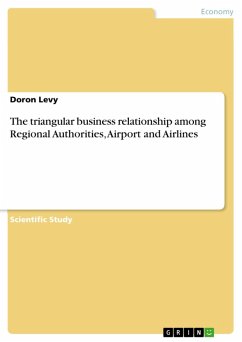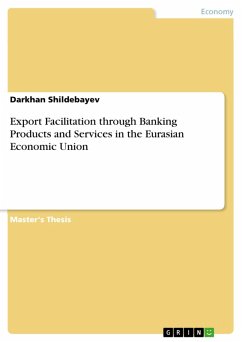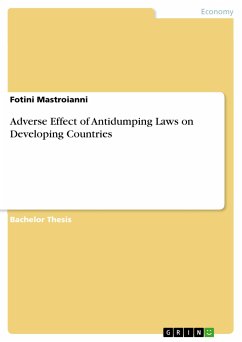
Intra-Industry Trade with Firm Heterogeneity. The Melitz Model and its Recent Extensions (eBook, PDF)
Versandkostenfrei!
Sofort per Download lieferbar
Statt: 47,95 €**
36,99 €
inkl. MwSt. und vom Verlag festgesetzt.
**Preis der gedruckten Ausgabe (Broschiertes Buch)
Alle Infos zum eBook verschenkenWeitere Ausgaben:

PAYBACK Punkte
0 °P sammeln!
Master's Thesis from the year 2015 in the subject Economics - International Economic Relations, grade: 2,0, University of Münster (Institute of International Economics), language: English, abstract: While the traditional Trade Theory is merely able to explain trade between developed and less developed countries, the more recent literature of the New Trade Theory allows for capturing trade between countries that are all highly developed. One of its models - the Melitz model of intra-industry trade (2003) - incorporates heterogeneity in firm productivity into a framework based on Krugman (1980)...
Master's Thesis from the year 2015 in the subject Economics - International Economic Relations, grade: 2,0, University of Münster (Institute of International Economics), language: English, abstract: While the traditional Trade Theory is merely able to explain trade between developed and less developed countries, the more recent literature of the New Trade Theory allows for capturing trade between countries that are all highly developed. One of its models - the Melitz model of intra-industry trade (2003) - incorporates heterogeneity in firm productivity into a framework based on Krugman (1980). The Melitz model is a corner stone of New Trade Theory models and has been extended in various papers to analyze intra-industry trade with respect to different aspects. One important aspect that is covered intensively in recent literature is the efect of unilateral trade liberalization on a country's welfare. This thesis presents the Melitz model (2003) by firstly illustrating its fundament based onKrugman (1980) and secondly deriving its working mechanisms both for opening for trade as well as for trade liberalization. Further, extensions by Melitz and Ottaviano (2005) and Demidova and Rodriguez-Clarez (2011) will be presented. The thesis concludes by discussing the contribution of the Melitz model to explain occurring trading patterns and its limitations.
Dieser Download kann aus rechtlichen Gründen nur mit Rechnungsadresse in A, B, BG, CY, CZ, D, DK, EW, E, FIN, F, GR, HR, H, IRL, I, LT, L, LR, M, NL, PL, P, R, S, SLO, SK ausgeliefert werden.













